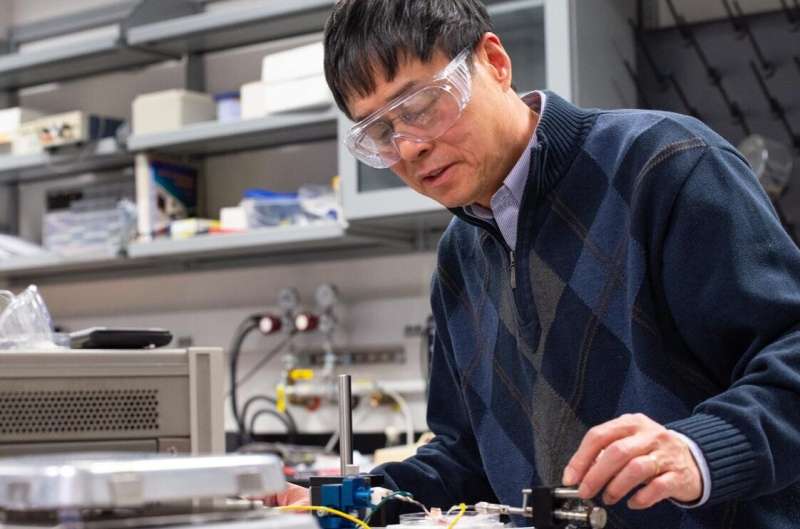Enhancing the electromechanical behavior of a flexible polymer

Piezoelectric materials convert mechanical stress into electricity, or vice versa, and can be useful in sensors, actuators and many other applications. But implementing piezoelectrics in polymers—materials composed of molecular chains and commonly used in plastics, drugs and more—can be difficult, according to Qiming Zhang, distinguished professor of electrical engineering.
Zhang and a Penn State-led team of interdisciplinary researchers developed a polymer with robust piezoelectric effectiveness, resulting in 60% more efficient electricity generation than previous iterations. They published their results today in Science.
"Historically, the electromechanics coupling of polymers has been very low," Zhang said. "We set out to improve this because the relative softness of polymers makes them excellent candidates for soft sensors and actuators in a variety of areas, including biosensing, sonar, artificial muscles and more."
To create the material, the researchers deliberately implemented chemical impurities into the polymer. This process, known as doping, allows researchers to tune the properties of a material to generate desirable effects—provided they integrate the correct number of impurities. Adding too little of a dopant could prevent the desired effect from initiating, while adding too much could introduce unwanted traits that hamper the material's function.
The doping distorts the spacing between positive and negative charges within the polymer's structural components. The distortion segregates the opposite charges, allowing the components to accumulate an external electric charge more efficiently. This accumulation enhances electricity transfer in the polymer when it is deformed, Zhang said.
To enhance the doping effect and ensure alignment of the molecular chains, the researchers stretched the polymer. This alignment, according to Zhang, promotes more of an electromechanical response than from a polymer with randomly aligned chains.
"The efficiency of the polymer's electricity generation was vastly increased," Zhang said. "With this process, we achieved a 70% efficiency—a vast improvement from 10% efficiency before."
This robust electromechanic performance, which is more common in stiff ceramic materials, could enable a variety of applications for the flexible polymer. Because the polymer exhibits resistance to sound waves similar to that of water and human tissues, it could be applied for use in medical imaging, underwater hydrophones or pressure sensors. Polymers also tend to be more lightweight and configurable than ceramics, so this polymer could provide opportunities to explore improvements in imaging, robotics and more, Zhang said.
More information: Xin Chen et al, Relaxor Ferroelectric Polymer Exhibits Ultrahigh Electromechanical Coupling at Low Electric Field, Science (2022). DOI: 10.1126/science.abn0936. www.science.org/doi/10.1126/science.abn0936
Journal information: Science
Provided by Pennsylvania State University





















